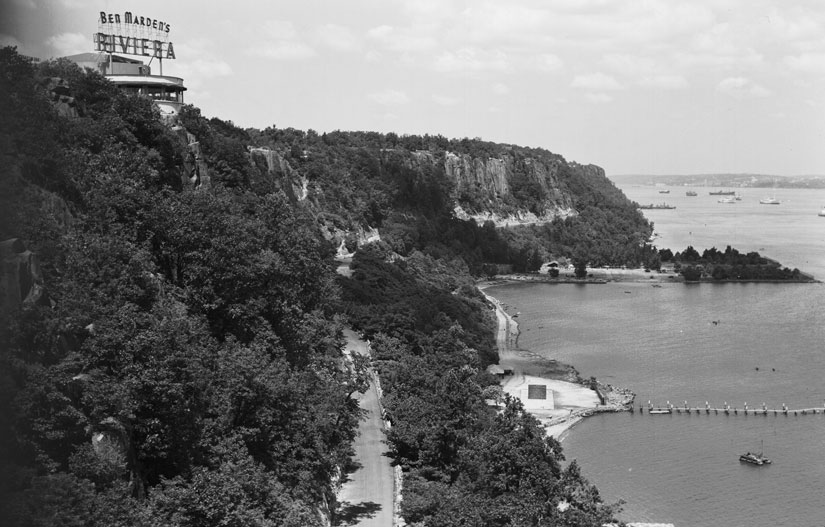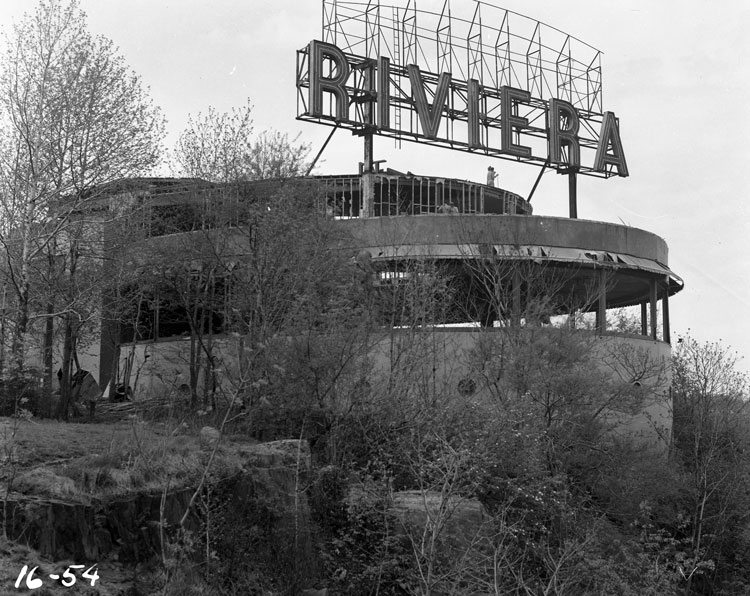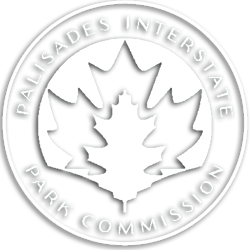Remembering “America’s Showplace”
A “Cliff Notes” Story
January 2006
Frank Sinatra, “Old Blue-Eyes,” freshly shorn, stands next to Rocky Vitteta, the house barber. Dean Martin and Jerry Lewis are on stage. So is Milton Berle. Dozens of others smile — from the walls and display cases, beside souvenir brochures and matchbooks. Beaming out from among lines of chorus girls and musicians are faces as recognizable as Pearl Bailey’s and Lena Horne’s. Or the Andrews Sisters’. Other faces, though perhaps instantly recognizable in their own day, serve today — for most of us, at least — as reminders of the fleeting nature of fame.
As visitors stroll through the exhibits at the Fort Lee Museum, their feet sink into the same plush red carpeting that once lay on the floor of Fort Lee’s fabled Riviera nightclub — where the photos were taken a half a century ago or more, where the brochures and matchbooks now on display had been carefully folded into pockets or handbags, treasured mementos of a magical night at “America’s Showplace” on the Palisades.
The tale of the Riviera began in 1931, the same year the George Washington Bridge first forged its link between the bright lights of Manhattan and the tree-shaded suburbs of Bergen County. In that year the renowned nightclub entrepreneur Ben Marden bought a cliff-top hotel in Fort Lee called the Villa Richard. Marden refurbished the Richard as a world-class club. He christened it the Riviera. Five years later, disaster struck. The new Riviera burned to the ground on a cold November night in 1936. Most assumed that Marden’s fortunes had turned to smoke as well. But he soon announced plans to build an even more spectacular Riviera, a few hundred feet to the south of the original (and that much closer to the Bridge). The new structure would cost $250,000 to build (this during the Depression!) and would be like nothing else ever seen on the tall cliffs before — or since.

Painted yellow, the art-deco building was shaped like the rounded transom of a great yacht berthed high above the Hudson (the windows were even shaped like portholes). At night a huge red neon sign could be read from miles away: Ben Marden’s Riviera. On warm evenings, the roof could be retracted to allow for dancing by starlight. The stage revolved so that one act could replace another without pause in the entertainment. And then there was the talk of hidden gambling rooms…
The club closed during World War Two. When it reopened after the war, a new name blazed in neon above the retractable roof: Bill Miller’s Riviera. As legendary in nightclub circles as his predecessor, Miller would run the club until it closed some ten years later. The club was a warm-weather operation, closing during the winter except for a single night: New Year’s Eve. On the nights it was open, limos lined up at the club’s Hudson Terrace entrance. Neighborhood children, as senior citizens years later, would recollect climbing trees to get a view of the celebrities and “swells” emerging from those long cars. Others remember capping their senior prom evening with a visit to the famous club.
As construction began on the Palisades Interstate Parkway, it became clear that the Riviera’s days were numbered. Miller fought against the closing, but it was a fight he was destined to lose. The building was eventually torn down, and only a few nondescript traces remain in the woods atop the cliffs. Many of the contents of the club were auctioned off, and some of these have found their way back to the exhibit that the Fort Lee Historical Society gathered together to display at the Fort Lee Museum.

Miller himself only died in 2002, at the age of 98. (His daughter is Judith Miller, the New York Times reporter so much in the news this past year.) And for those who may be interested, one can still get a trim from Rocky Vitteta, the Riviera’s house barber, whose scissors touched so many famous locks — and who works now at Alberto’s Barber Shop on Main Street in Fort Lee.
– Eric Nelsen –

